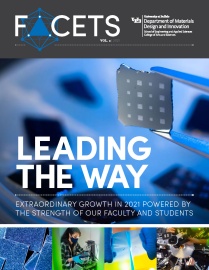EPA recognizes MDI work on classifying “forever chemicals”
by Jane Stoyle Welch
Published March 10, 2022
Forever chemicals are all around us –in many consumer, commercial and industrial products, such as nonstick cookware, stain and water-resistant treatments and takeout containers.

Krishna Rajan
Their long-lasting components break down slowly over time. There is much that we don’t understand about these chemicals, also known as PFAS (per- and polyfluoroalkyl substances), and their potential negative impacts on the health of humans, animals and our environment.
An important first step in expanding information, transparency and regulation around the thousands of existing PFAS is to develop an effective, efficient system for classifying them. However, due to the large number and diverse types of PFAS, it has been a challenge to develop systematic terminology to describe them.
To help overcome this issue, the Environmental Protection Agency (EPA) announced that they have adopted a computational method developed by MDI researchers An Su, a post-doctoral scientist, and Krishna Rajan, Erich Bloch Chair and SUNY Distinguished Professor, to build the science driving the regulatory policy of classifying PFAS compounds.
Su and Rajan established a new data framework that links the molecular structural modeling of PFAS chemistry with advanced machine learning tools to rapidly give insight into the fundamental chemistry that drives the classification of PFAS structure and functionality. The details are described in their paper, “A database framework for rapid screening of structure-function relationships in PFAS chemistry,” which was recently published in Nature’s Scientific Data.
The research will be part of the EPA’s National PFAS Testing Strategy, which was established to advance our understanding of PFAS and their impacts.
This work was sponsored of the MDI Collaboratory for a Regenerative Economy (CoRE) directed by Rajan and the NSF Materials Data Engineering Laboratory project in which Rajan is a co-PI with colleagues in University at Buffalo’s Department of Computer Science and Engineering and MDI.
